-
Posts
19,654 -
Joined
Content Type
Forums
Detector Prospector Home
Detector Database
Downloads
Posts posted by Steve Herschbach
-
-
Excellent report on the Happy Camp material at http://gemologyproject.com/wiki/index.php?title=Californite along with photos, one showing gold.
-
 2
2
-
-
What Chris said.
Just pebbles with magnetite in them - great stuff for a test garden. I specifically test in that kind of stuff because that is where gold often gets found - high mineral ground.
People have these test gardens and every time I see them talking about picking a dime up at 10" in their test garden I know they are in mild soil. I can get accurate id on a dime at about half that in my test site. Compared to all metal modes it is stunning how much depth gets lost just turning on the discrimination.
If you have mild soil you may as well air test. It seems to me it is the bad ground that separates the real detectors from the wannabes. The problem is if you compare your results in bad ground to all the online super results in mild ground you might think your detector is defective!
-
 3
3
-
-
You cannot tell a gold ring from aluminum that reads just the same. So if a specific ring reads identical to a certain type of pull tab, and you tune that pull tab out, you will miss that ring.
However, a certain tab, like the flip tab currently used on soda and beer cans, reads in a very specific range on a metal detector. About 12-16 on the CTX 3030. That means you can eliminate this tab and all rings that read lower or higher than the tab will still be found. Rings read all over the place depending on size, shape, and purity of the gold. Eliminating one specific type of tab gets rid of all those tabs, but you only miss rings that read exactly the same, and the odds are the vast majority to rings will read differently.
The idea is not to do this as a rule, but to reserve discriminating out certain items for areas where they are overwhelming in number compared to the time available to dig.
I will do up as detailed post on rings and tabs etc as start of another thread when I get time.
-
 3
3
-
-
19 minutes ago, Zampano said:
Thanks Terry
Fully agree on all you point out. Still, if looking at a "general purpose VLF detector" (not so hot on gold). Why will a 3030 be the better choice than a cheaper VL, if everybody tells me, you may not rely on the ID, not even with the 3030? I much like the TX but I do not understand why it should be any better than a Makro Racer in practice... If it's just for waterproof, there are also cheaper models in the same freqency ranges.
What people try and explain and warn is that you should not consider discrimination as being 100% accurate. That does not mean never use it. Understanding the limitations of your tools can present you with opportunities to exploit. Knowing targets overlap and which you can ignore and which you must dig to get desired results is a skill bordering on art when it comes to metal detecting.
If you want the best ability to learn to identify targets prior to digging a CTX 3030 is hard to beat. The audio combined with the color screen depiction of targets makes it very easy to identify items like bottle caps that other VLF detectors struggle with. It gets my vote for best discrimination system currently available.
-
 4
4
-
-
2 hours ago, Zampano said:
But this does not answer the blunt question for me of why investing in fantastic ID capabilities if it's not worth it?
The fact is very few people want to go out and simply dig all the metal out of the ground. There are of course people who say "dig everything" but there are very few who actually dig every target they encounter. Even people with all metal dig it all detectors like a PI will often pass on signals that "don't sound right" now and then.
Dig everything tends to come mostly from prospectors and beach hunters. However when prospecting you can certainly find places littered with thousands of ferrous trash targets like nails and rusted can bits. Many "dig it all" hunters simply walk away from places like that. Dig everything at the beach sounds great until you find a beach with thousands of hair pins and bottle caps.
I am probably as cognizant of the dangers of discrimination as most anyone, but I employ discrimination on a regular basis. With the exception of some relic hunters who target ferrous items most detectorists would be happy with a detector that rejects all ferrous targets - and does so accurately.
When it comes to discrimination beyond that there are several factors. Time is a big factor because none of us has unlimited time. If a good find lurks in hundreds or thousands of trash targets, do you have time to dig everything? In two hours I can only dig so many targets and I need to help insure they are the right ones.
There is physical health and stamina. Not everyone can dig thousands of targets on end and instead have to pick and choose before they get too tired.
There are environmental issues - in a groomed park or yard holes must be kept at an absolute minimum.
And what about fun? Not everyone enjoys digging junk. Give a new person a detector, and if all they do is dig junk for hours they will most likely decide detecting is boring and stupid.
Here is a specific personal example. I am gearing up for beach detecting again. My go to machine is the Garrett ATX and in general I prefer to dig everything. However, if I get in real rough surf conditions recovering targets is very difficult. I am after jewelry, and coins are a major trash target. Most rings respond on the ATX with a hi-lo tone. Coins except nickels and zinc pennies have a lo-hi tone. If I am trying to up my odds with the ATX and jewelry I will dig only hi-lo tones. I may miss a very large men's gold ring or silver rings, but I will get most of what I am after with fewer holes dug.
Some beaches are littered with hair pins (bobby pins), bottle caps, and certain aluminum items, like the flip top on cans that people love to tear off and discard. What's up with that? My CTX 3030 allows me to easily identify and pass on these items when they become so prevalent as to be a huge waste of time.
It really all does boil down to time. Yes, discrimination can cause missed targets. On the other hand, it can change the ratio of trash to treasure dug to be in ones favor. I can dig 99 trash items and one good item in 100 holes. Or I can dig 80 trash items and 20 good items. I can even dig 80 good items and 20 trash items.
What are you looking for, how much trash is there, and how much time do you have for detecting? How much of that time can you devote to digging trash? The answers to those questions determine just how much value a good discriminating detector has for you. There is no right or wrong answer as it just depends on what it is we each want to achieve when metal detecting. I can promise you that for the majority of people, digging huge amounts of trash is not one of the goals.
One last note however. For me it is all strategy and site definition. On a busy beach I might employ some discrimination to eliminate the most troublesome items. But if the there is a volleyball net on the beach, I have to dig every target in its vicinity. The beach as a whole has lots of trash and few rings as well as being of unlimited size. The volleyball location has better odds of lost jewelry, so concentrating more on it and digging all targets has better odds of success there.
If nugget detecting a really trashy area I might start with a VLF to eliminate ferrous items. But if I hit a nugget, the area where the nugget was found gets hit with a dig it all mentality. Judging the site and your odds is a big factor in being successful while metal detecting.
-
 3
3
-
-
I still follow developments on the MX Sport on various forums out of curiosity. Bottom line is if you need a unit waterproof to ten feet there are not many to choose from and the MX Sport is one of the very few possibilities. Or perhaps you just like rain proof and being able to rinse off a dirty detector. If you do want to use it in the water then as a single frequency machine I would recommend it more for fresh water than salt water use. The MX Sport by all accounts gets very good depth in mineralized ground. That said, if you do not NEED waterproof than there are options with better coil selections available and for less money, like White's very own MXT.
Personally I am not convinced the firmware tweaking is over, but you can rest assured White's will back you up if you do have issues with the machine.
-
 2
2
-
-
"Three amateur archaeologists recently found the largest Viking gold hoard ever discovered in Denmark. At 900 grams (1.948 pounds), the hoard consists of seven beautifully worked bracelets, six of gold and one of silver. The silver piece weighs about 90 grams."
-
 2
2
-
-
One of these days I am anticipating getting the V4 update for the XP Deus and along with that the new 4.7" x 9.5" DD coil. This should be a great coil not only for better "see through" capability is thick trash but a very good prospecting coil. The V4 update is supposed to include the ability to use 15, 30, and 45 kHz but only with new coils designed to operate at those frequencies. The 4.7" x 9.5" coil is the first of the coils designed to work at the higher frequencies. The Deus running at 40 kHz with this new coil should be a formidable gold prospecting device for trashy locations in particular.
I did not want to have to swap my 11" coil around with the new coil and XP rod assemblies are a bit pricey. The full rod assembly is $264 and just the lower rod is $57.00
I had heard about the Golden Mask Universal Rod Assembly for sale at on eBay for about US$120 plus US$30 shipping from Bulgaria so ordered one on May 31 and it arrived today just over two weeks later. There was no issue buying the item and the seller answered questions promptly. That seller is gone now so here is a link to the manufacturer website.
The bottom line is the rod is much higher quality than I imagined it would be. The tubes are carbon fiber. The armrest assembly looks like cheap plastic in the photos but is powder coated metal. The rod locking rings have rubber grip surfaces and are some of the best I have ever felt. The unit collapses to 21" and expands to 55" with a weight of 1 lb 1.8 oz without the included armrest strap compared to XP rod assembly at 1 lb 0.4 oz also without arm strap. Slightly more weight but also more compact when collapsed. The end is 5/8" diameter and same bolt as the XP. The rod is just a tiny bit loose in the XP coil ears but will work. It is a hair tight on White's coils but also will work. It would be loose on most other brand coils and bolt too small. However, many lower rods will swap out with the lower rod on this unit so should be easy to mate up with most anything.
I am very pleased with this purchase.
-
 6
6
-
-
A current and very well explained view of the current situation regarding suction dredging in California.
-
 1
1
-
-
The MX Sport is currently one if the best options available for fresh water detecting.
Insuring the MX Sport would work properly with existing coils would have scored a lot of points with people that have large existing coil collections. People have made adapters but results have been mixed. White's has officially disavowed the practice at http://forums.whiteselectronics.com/showthread.php?75564-MX-Sport-Coils-Adapter-Info
-
It is rather fascinating the differing subjective realities we each live in. Our realities are probably similar in most ways Tom, but at a very profound level you and I live in two different worlds. I love science fiction and fantasy, but the world I live in does not include the supernatural. My world is a magical enough place as it is without adding that extra dimension to things.
Therefore while similar things may occur in my life they are not as memorable as they have far duller explanations. Perhaps that extra dimension adds something to your life that is missing in mine. You at least will have ghost stories to tell people while I never will.
-
 5
5
-
-
Minelab Stop Counterfeits page http://www.minelab.com/usa/customer-care/stop-counterfeits
-
There is a new large coil option for the MX Sport and you new brand gamblers out there http://www.blackdogdetectors.com/for-white-s.html
-
 1
1
-
-
I agree Des, for prospecting right now out of the three coils available the 6" x 10" DD would be the best option. Rumor has it a smaller coil is in the works that might be a better sniper coil but it is hard to beat the 6x10 as a general prospecting coil.
Currently available MX Sport coils; 9.5" concentric on left, stock 10" DD in center, 6" x 10" DD on right.
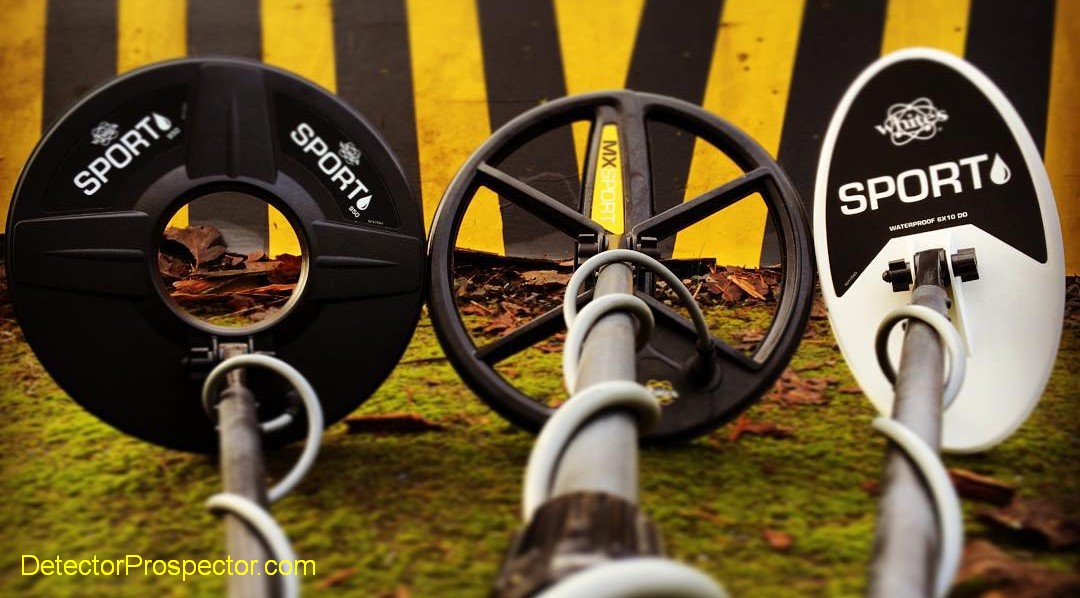
-
 1
1
-
-
A few people are claiming excellent depth on coins and relics in mineralized ground. The MX Sport is at the end of the day however just another mid frequency VLF and so expectations have to be kept in line with that basic fact. If anyone ever gets around to head to head testing on gold nuggets with identical coils I would bet on performance similar to what one would get from a White's MXT.

-
 1
1
-
-
Good way to break in a new detector!
-
The primary reason for my using larger coils is usually for better ground coverage first and more depth second. My Bigfoot coil is a perfect example of using a large coil for ground coverage because at only 3" wide it is not a deep seeking coil. Can't beat it for sports fields or large parks areas though. And it is looking like the 17" coil for my CTX will be the coil most used at the beach, for no other reason than that beaches are huge and finds can be sparse. Ground coverage first, and depth gain a bonus.
For most coin detecting I prefer stock coil sizes or smaller. I tend to gravitate to trashy locations so target separation is usually a factor. Plus, in a lot of mineralized areas the depth gains if any are minimal with larger coils when running VLF detectors. If the ground is bad enough you can get actually get less depth with a larger coil on a VLF due to ground feedback.
For PI type nugget detecting I do often lean towards larger coils, but now a bit more for depth than ground coverage. You get more bang for the buck with large coils on a PI than on a VLF. My standard coil for my GPX 5000 the last few years I had it was an 18" round mono coil.
When I add it all up over the years however I have to admit that overall gains from larger coils for anything other than a PI are often more imagined than real, and many oversize coils I have purchased got minimal use once reality set in. I have therefore become a bit more cautious of investing in larger coils as I have usually had better returns with smaller coils. I do think they are worth having but with the realization that they often end up as niche items that only get use on rarer occasions. Once of the nice things about selling my GPX was in getting rid of all those coils!!
Right now I only have three I am keeping:
18" x 3" Bigfoot coil for DFX - sweeping large areas like sports fields for jewelry; ground coverage
15.5" x 13" DD for Gold Racer - looking for large nuggets in cobble piles; depth
17" x 13" DD for CTX 3030 - beaches, other large areas with sparse targets; ground coverage, depth
Big coils worth it? Yes, but only for very specific uses.
-
 4
4
-
-
Ok Al, we get your opinion. You have voiced it three times in a row now. Taking GPZ 7000 to salt water beach - bad. All risk, no reward. Not an especially smart move.
Got it.
-
I guess it all depends how you look at it. I think more choices are better. First Texas owns Bounty Hunter, Fisher, and Teknetics. They often market the same detector under two or more of the brands. So you get the Fisher Gold Bug DP and Teknetics G2. Same detector but different rod assembly and colors.
Some people like the Fisher S rod, others like the Teknetics pistol grip. Fisher is black and gold, G2 is gray. Bottom line is maybe I just think the Teknetics model looks cooler. Who knows, but the fact you can get basically the same detector in two different packages is not a bad thing to my way of thinking.
If you like inbreeding then you can have examples like the original White's MXT in semi gloss black and 950 (9.5") concentric coil, or you could get the MXT 300 in flat black with 300mm (12") concentric. Same exact detector dressed up two different ways.
If we ever see a detector company go factory direct we could just place an order for machines the way we want them. The coil we want, and maybe extra charges for custom paint jobs or decals.
-
 1
1
-
-
I may buy the version with no headphone included. I don't like being locked into specific phones and do not like the headphones that are included with most wireless systems. So I would be interested in a report for sure.
-
3 hours ago, Roughwater said:
I think I may have laid an Egg here with that statement.
 Glad you all read too. But in my defense, look at what Steve is using and not as much with the review. If you don't know what he is using, it's the Gold Racer. Why? Ask him. Just remember, when you find that 1/10th of a grain flake, you only have 4799 to go to get you an ounce of gold. But then again there are many, many more of those flakes out there than there are one ounce nuggets which ups your odds of finding something. Terry
Glad you all read too. But in my defense, look at what Steve is using and not as much with the review. If you don't know what he is using, it's the Gold Racer. Why? Ask him. Just remember, when you find that 1/10th of a grain flake, you only have 4799 to go to get you an ounce of gold. But then again there are many, many more of those flakes out there than there are one ounce nuggets which ups your odds of finding something. Terry
I ran the Gold Bug 2 at Jack Wade with no problem. But yes, it's harder in hot ground and depth is minimal.
The GMT (48 kHz), Gold Bug 2 (71 kHz) and Gold Racer (56 kHz) will all bang hard on gold specs under a grain in weight. If one has an edge over the others for tiny gold I would lean Gold Bug 2 with 6" coil personally. However, the GMT and Gold Racer have the edge for larger nuggets at depth because the GB2 hot 71 kHz has poor overall ground penetration. Both the GMT and Gold Racer can employ DD coils that are lacking on the Gold Bug 2, which only employs concentric coils. The Gold Bug 2 has nothing that comes remotely close to matching the 15.5" X 13" DD available for the Gold Racer. I also like having an adjustable disc mode and target id readout on the Gold Racer.
Variations on a theme with the units leaning one way or the other for capability. If all a person wants to do is chase tiny bits, you just can't beat a Gold Bug 2. It is as proven as a machine can be, and tough as nails. I can also give anyone with a Gold Bug 2 a run for the money with a GMT. In my opinion however a GMT new at $729 and 3.9 lbs does not compare very favorably to a Gold Racer at $699 and 3.0 lbs. for price and features. I am not saying the GMT is a bad machine at all, just that it needs a $100 price reduction.
To bring this all home however I think it does not make a lot of sense to drive 3000 miles each way or to fly to Alaska to chase tiny bits. There is not that much exposed bedrock on Jack Wade and it has been hunted hard. I would concentrate more on looking for larger nuggets and at Jack Wade that takes no more than a very good mid frequency VLF. The White's MXT is a sort if benchmark unit when it comes to hunting tailing piles, and it or any comparable machine can do as well. If you wish you can use a PI but be prepared to dig tons of nails if that is the case.
Lower Jack Wade including all the public area is pretty mild ground. If you can get access to private ground upstream the ground gets hotter and hot rocks more common. The upper valley is full of large magnetite stones that are very rare in the lower valley.
-
Wow, I am sorry to hear that. I knew there was a reason I would never get on one of those things. Hopefully you heal up in record time!
-
1. I have a GPX also. How did you recharge the batteries at your camp? What settings did you run? Did you use Sharp Timing during all of your detecting? I generally just charged off the 12V in my vehicle. My old 4-Runner did not have an always on 12V outlet so I had one wired into the rig so I could charge overnight. Pretty much ran Sharp all the time.
2. Did you use a rain cover on your GPX or F75? Only when hunting in the rain.
3. Do you have experience with the F70, how does it compare with the F75? (I found a possible F70 deal.) No, but I understand it is a good detector.
4. I have a Gold Bug 2. Should iron discrimination be run at minimum so as not to miss small gold. Could the 6 inch GB2 elliptical coil be used on an F70? Iron disc on the GB2 is all or nothing, and yes, using discrimination will come at the cost of lost sensitivity. GB2 coils only work on a GB2.
5. You stated at Jack Wade you drove on dirt roads. You have a Toyota 4 Runner. Is a 4wd required for those roads? All roads past Chicken are dirt, including the highway. No need for 4WD though unless you got well off the beaten path.
6. The Public Area for Jack Wade runs along both sides of Wade Creek. Is the creek generally fordable in waders? Are both sides accessible for prospecting? The creek varies with the rain, and can do so in a matter of hours. I could usually just fast hop across in regular boots but in a bit wetter weather waders would be good.
-
 1
1
-
-
Deteknix first made their name with their XPointer pinpointer. The products are made in China and the company has a U.S. office in Covina, CA. The website is at http://www.deteknix.com/
The first detector by the company got a lot of notice prior to release based on photos showing a relatively simple and modern design. Key features were a straight shaft, light weight, built in rechargeable battery, built in wireless headphone capability, and supposedly waterproof to 3 meters. However, the new Deteknix Quest Pro got savaged pretty bad on release. http://www.dankowskidetectors.com/discussions/read.php?2,98160,98881
The brand was also discussed back in April on this forum at http://www.detectorprospector.com/forum/topic/1904-new-deteknix-metal-detectors/
Then Findmall set up a forum at Link deleted since Findmall Forum update broke all old links for the new brand. it only has a few people posting but one caught my eye - George Kinsey, who goes by woodchiphustler. George has been around and I have found his opinions to be of value. I thought it interesting that despite early bad reports he seemed to not only like the units, but had interest in being a representative for the brand. My assumption is new brand/new model teething pains but otherwise looking good enough to get more than a passing glance from George. I can't say for sure having never been even near a Quest Pro.
The main reason for this post is that the company plans a similar machine but aimed at gold prospectors - the Deteknix Quest Gold. It is to be a 19 kHz machine and except for the frequency appears to be a general purpose detector. There is no release date at this time for the Quest Gold or another planned model, the Quest Diver, a waterproof unit.
The company does make a wireless headphone setup with a transmitter module you plug into any detector, and a receiver module that lets you use any headphone you want. Looks good on paper, but again some initial issues reported with lost signals, etc. I assume that will get sorted out.
Anyway, no real reason for posting other than to keep people alerted to possible new prospecting detectors. I can't say that I personally have any real interest in yet another 19 kHz single frequency detector. There are too many now as it is, and no new one is going to do something that existing models can't do also when it comes to detecting gold nuggets. It really is just the design itself that is interesting more than what the machine can do that is interesting. That, and the Chinese finally making a credible attempt at entering the market by at least opening offices in the U.S. You might think this would mean more low price competition but the Quest Pro at $599 will not put much fear in the competition. The Quest Gold is rumored to be about $100 more than the Quest Pro.
The Quest Pro was supposed to be waterproof to 3 meters. Some websites selling the unit still say it is, but the company website only says "All Terrain Structure Design" so I am not sure just how waterproof these units are.
I think single frequency VLF is now at commodity stage with the number of new names producing models seemingly growing by the day. This can't go on forever and we are seeing some hints of a coming price war.
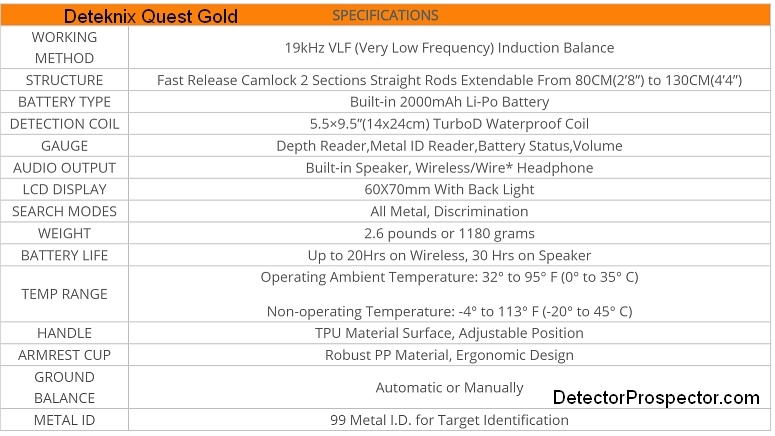


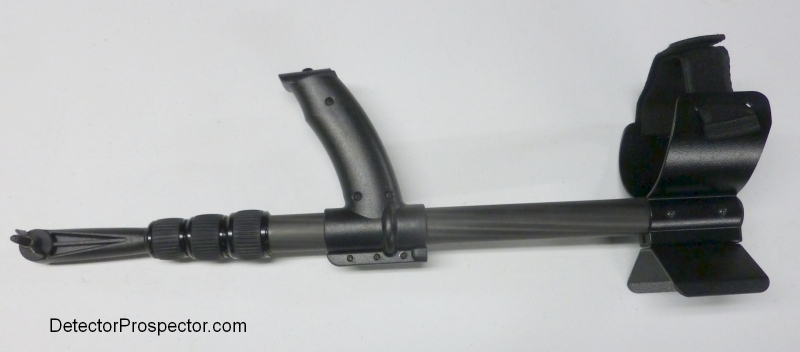
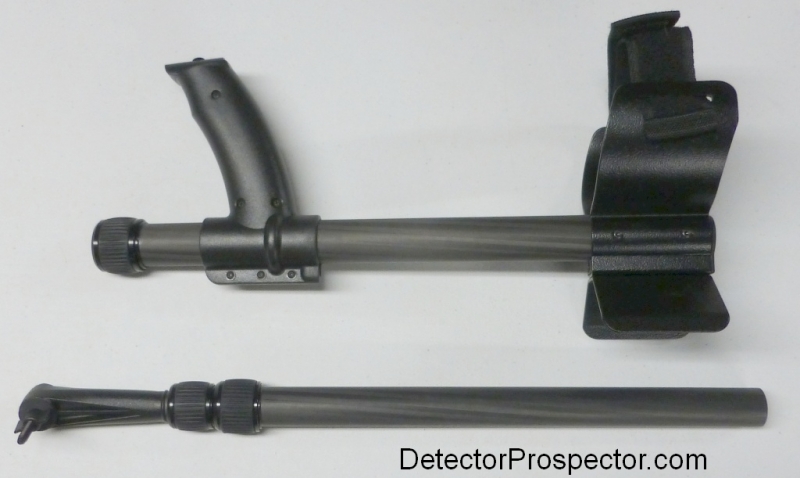
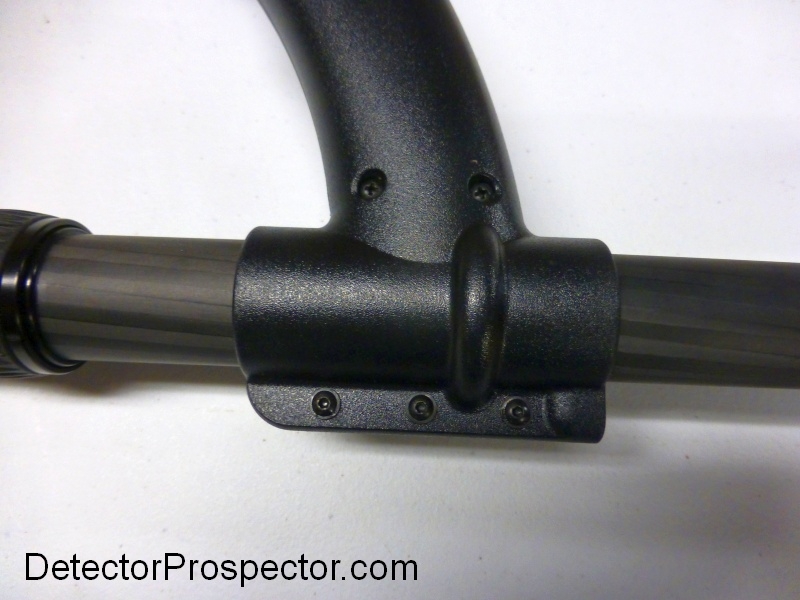
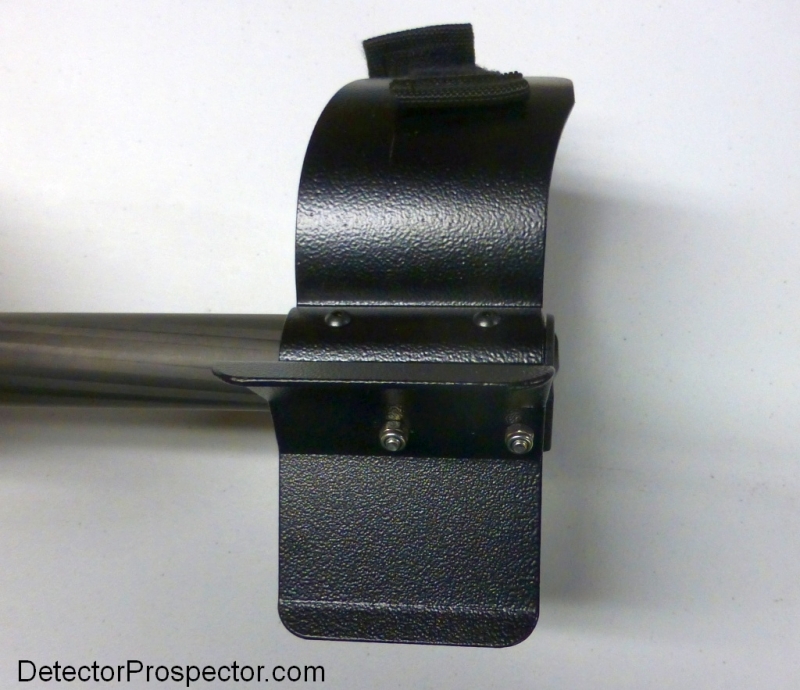
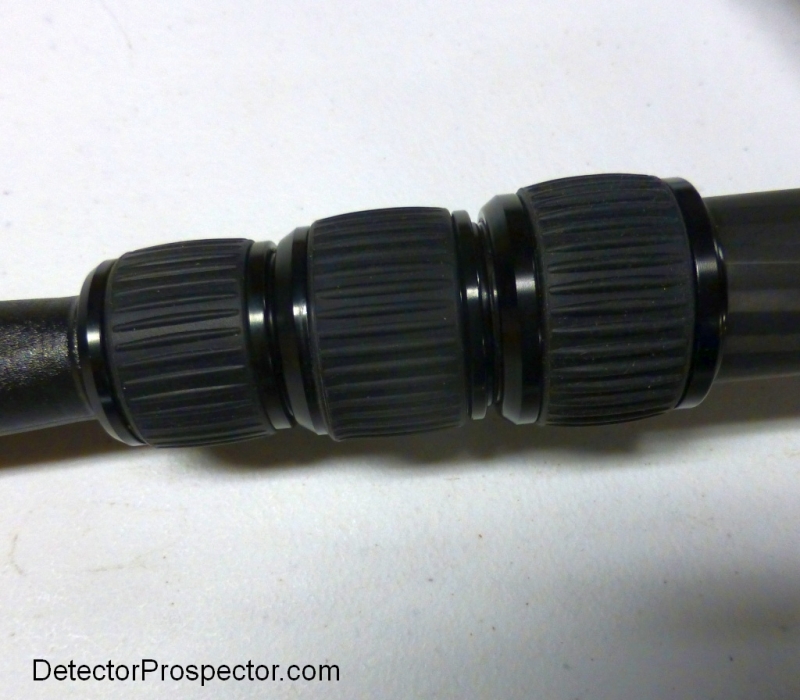
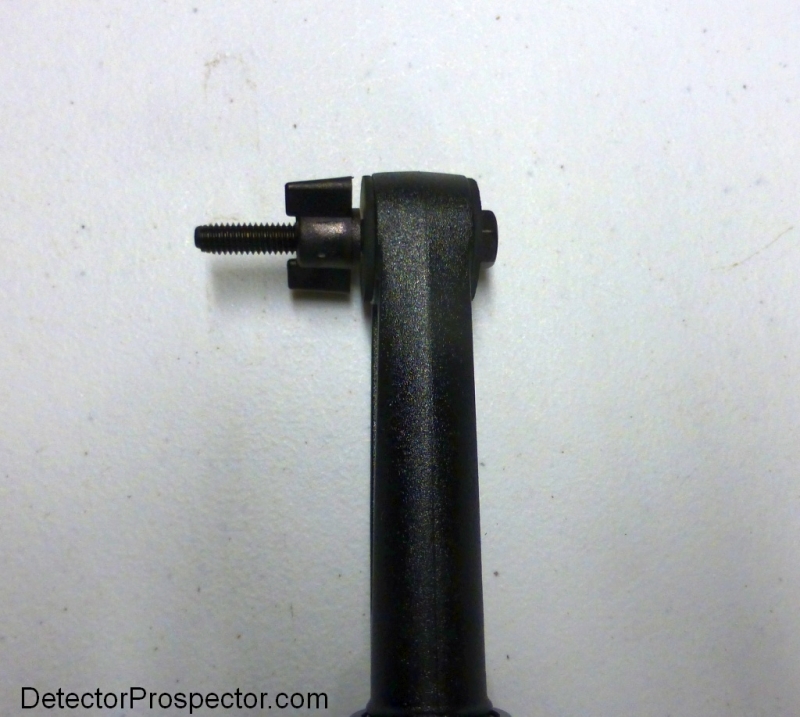
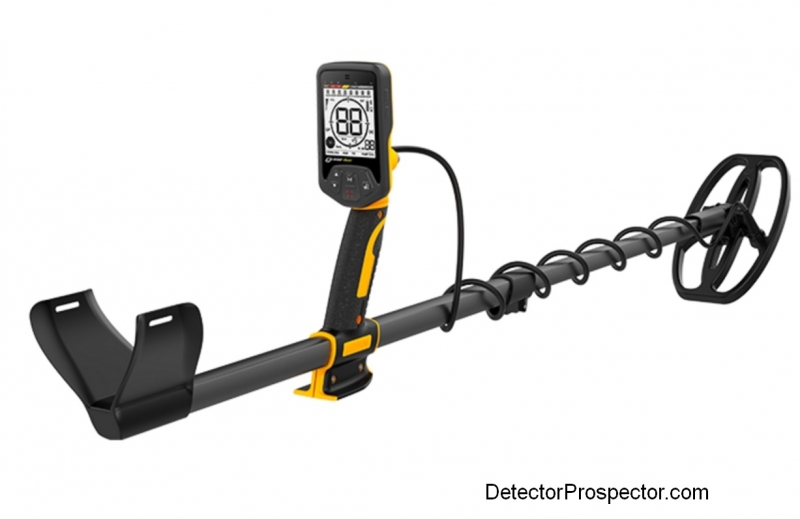
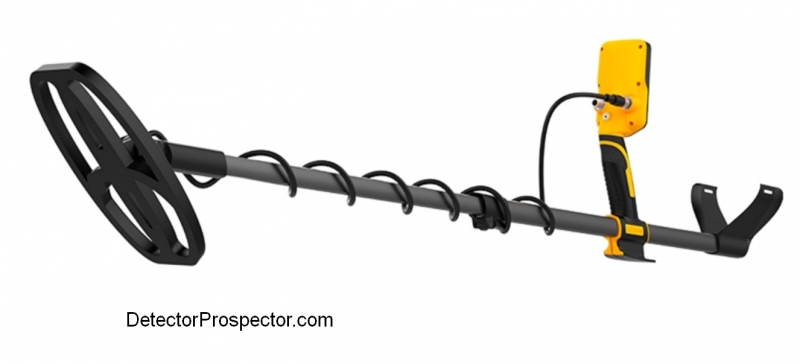
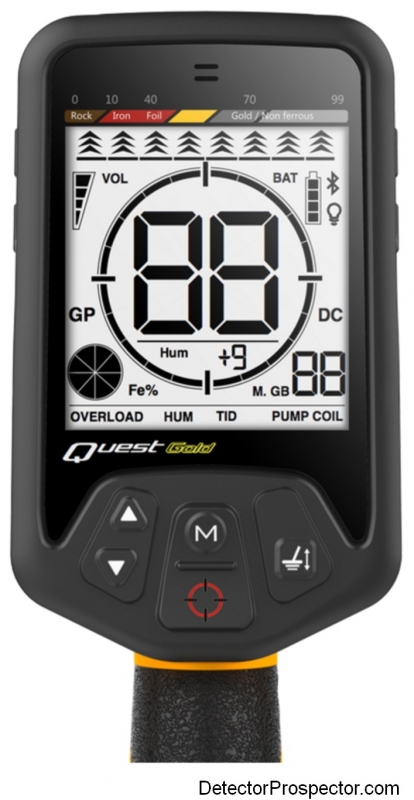
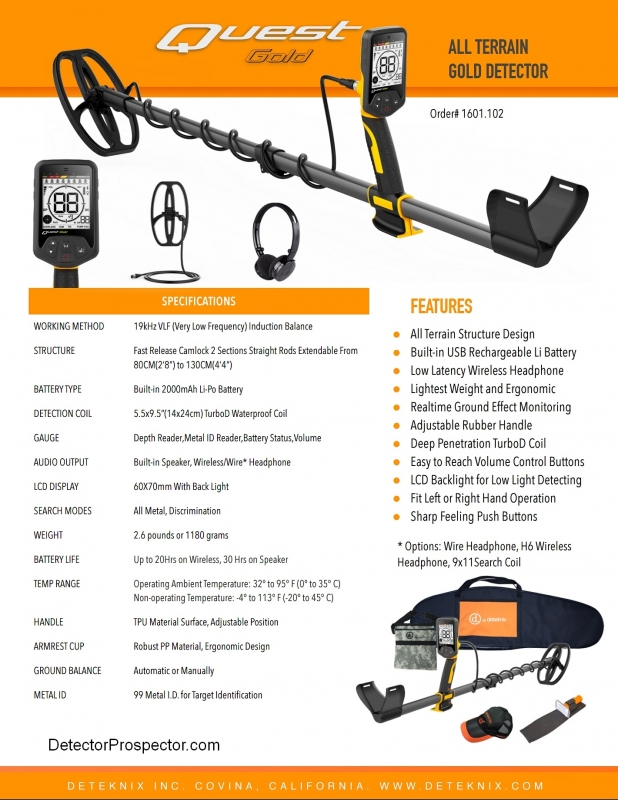
Reports On MX Sport Firmware Update - Post Here
in White's Metal Detectors
Posted
It is not a matter of not wanting to welcome a new forum member. Welcome DetectingMO! It is that as a dealer the only appropriate solution here is to pick up the phone, call White's, and get the answers directly.
I think the inability to know without question what firmware version any MX Sport is actually running has placed this model under a cloud. It appears still to be a total roll of the dice buying one new off the shelf, and good luck buying one used.
Other companies in similar positions do at least make machines that display the firmware version. Anyone buying an old Gold Bug model (any with a screen) need only hold the pinpoint button when the unit powers up, and the firmware version will display. Where is this function on the MX Sport?